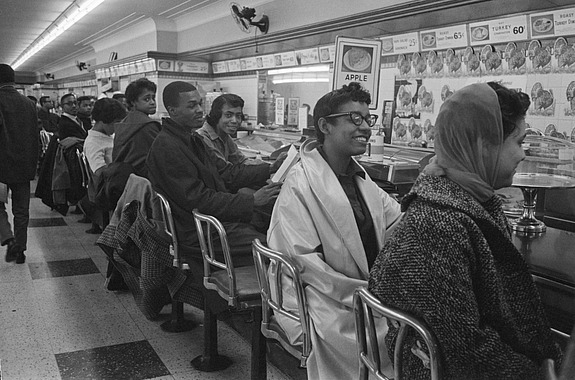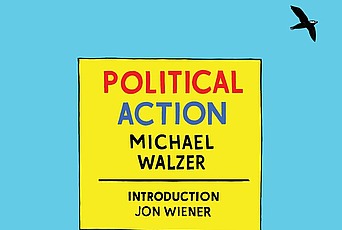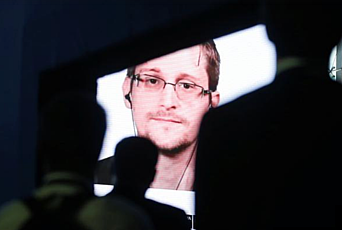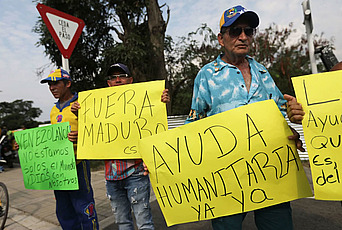Political Action: A Practical Guide to Movement Politics

Originally published in 1971, Political Action: A Practical Guide to Movement Politics by Michael Walzer, Professor Emeritus in the Institute’s School of Social Science, was republished by New York Review of Books in 2019. The following is Walzer’s preface to the new edition.
Written almost fifty years ago, in the immediate aftermath of the American bombing of Cambodia, Political Action: A Practical Guide to Movement Politics reflects a decade of intense political activity. Since I was aiming at a guide that would be helpful to citizen activists of all sorts, I avoided specific references to sixties politics; I wrote in a generalizing mode. But now I want to describe to new readers some of the concrete engagements that made me a citizen activist and led me to write Political Action.
Movement politics is mostly the work of the young, and I was very young, twenty-five, an unhappy graduate student, when Irving Howe, the editor of Dissent, asked me to fly to North Carolina and talk to and write about the black college students who were sitting in at Woolworth lunch counters. It was February 1960, and the sit-ins were the beginning of The Sixties.
I did talk to the students and write about them, but what was more important, I helped organize, with other liberals and leftists in the Boston area, the Emergency Public Integration Committee (EPIC), whose members picketed local Woolworth stores in solidarity with the Southern sit-inners. EPIC started with a good name, which is important, and at its peak was running demonstrations in front of some forty stores in and around Boston. A friend and fellow graduate student was the organizing genius behind all this; I mostly talked, explained what we were doing, recruited picketers at the region’s many universities—and struggled to ward off ideologues on the farther left, who wanted EPIC to make a revolution. I also consulted with lawyers and, together with the picket-line captains, negotiated with the police, who were mostly unfriendly but careful and correct, and who didn’t harass the picketers so long as we didn’t harass the shoppers.
Ours was a single-issue politics. We knew that racism in the United States reached far beyond whites-only lunch counters, segregated restrooms, and back-of-the-bus seating, but we followed the students in the South; we were not an independent movement. EPIC had a short life; after 1960, Northern supporters of the civil rights movement went South, marched in Alabama rather than in Boston. And of course we marched in Washington, too, and listened, standing there or on the radio, to Martin Luther King Jr.’s famous “I Have a Dream” speech. But it might have been more effective in the long run had we sustained local organizations in the North where racism was less visible, perhaps, but a powerful force nonetheless. So I began to think about how activists, such as we were, could keep things going.
A large number of civil rights activists moved naturally into the anti-Vietnam War movement. That was my next political destination and, again, my most intense engagement was local. By the mid-sixties, we had a new model for local political action: Students for a Democratic Society (SDS) community organizing. In 1967, I joined with a few people from Harvard SDS to organize the Cambridge Neighborhood Committee on Vietnam (CNCV), whose aim was to mobilize the city of Cambridge against the war. We went house to house, block by block, talking to whoever would talk to us, looking for someone who would volunteer to host a neighborhood meeting where we could defend the antiwar position.
Community organizing, SDS-style, required us to find “community people” and make them the leaders of the organization. This could be an inauthentic politics, where the young activists sat in the back of the room while a community person ran the meeting, and the people attending got cricks in their necks looking back for cues from the real leaders. But that wasn’t the case in CNCV One of our early volunteers was a part-time film editor and young mother who turned out to understand more about organizing than any of the rest of us—and who went from the CNCV to law school and a distinguished career in civil liberties work. I was her co-chair, who talked, probably too much, at our frequent meetings and fended off the Trotskyists.
Every organization needs a project; activists can’t just talk; they have to find something to do. So we circulated petitions to put a statement on the November ballot calling on the city of Cambridge to hold a one-day rally against the war. With the help of a friendly lawyer, we got on the ballot, and then went door to door asking for votes. Looking for help, we gathered our courage and invited King to come to Cambridge and knock on a door. He came and knocked in front of reporters and cameras, and briefly we brought the civil rights and antiwar movements together (but only a few of the black preachers followed King’s lead).
I doubt that King helped us in the white ethnic neighborhoods of Cambridge. We got 40 percent of the vote in November, and lost every working-class district. Only Harvard Square and its immediate surround voted strongly against the war. We recruited a few community people but hardly made a dent in the larger community. Still, CNCV had established a presence in at least part of Cambridge and might have survived as a political organization, reaching out to other issues and seeking a wider base (a few people suggested that we run a candidate for city council). But that was not to be.
Political activity requires a lot of work, and the distribution of the work is a central issue, not because activists try to avoid the burden but because they are too eager to embrace it. The younger activists, even if they are students or instructors (as I was) in supposedly demanding universities, have a lot of time for all sorts of organizational work and especially for meetings. The community people are older, with jobs and families; their time for political action is limited. So the young sit through long meetings, work long hours, and take over. But we were, most of us, without community roots and with very strong ideological commitments. As the war in Vietnam escalated, became morally unbearable, we started arguing among ourselves about what ought to be done. We had no particular interest in Cambridge city politics; indeed, the war made local politics look less and less important. We were drawn into national debates, and in these debates, we took different sides. So CNCV died of division.
Some of us went into draft resistance; a very few joined the Weathermen and tried “to bring the war home”; most of us supported the presidential campaign of Eugene McCarthy (as I did). I traveled briefly with McCarthy and made notes for some of his speeches (and he wrote a foreword for the original edition of this book). Not all citizen movements have to end with electoral politics, but I thought that was the right end for the antiwar movements of the late sixties. Our central obligation was simply to stop the war, as McCarthy would have done—and probably Robert Kennedy, too, who stepped in late in the day and added to the divisions on the left. His assassination led to Hubert Humphrey’s nomination and then the disastrous defeat of 1968.
What followed was the invasion of Cambodia, ordered by Richard Nixon and Henry Kissinger—which produced another big Washington march but no renewal of local antiwar politics. The divisions on the political and intellectual left were deep and, so it seemed, irreconcilable. For the moment, I had nothing to do, and when political activists can’t act, they write a book.
The editors at New York Review Books Classics have agreed to republish this book exactly as I wrote it in 1970–71, with all my incorrectly gendered pronouns. But I think that I was more aware than most sixties activists of the central role that women should play in our organizations. This isn’t a period piece. Perhaps the only chapter that would need revision today is the one on the mass media, which deals with relations between activists and reporters. None of us anticipated the anarchy of the Internet, where thousands of people are posting and tweeting every day. What looks like participatory democracy has led, instead, to radical polarization and endless falsification. No doubt, the new media can help raise money and, maybe, get people to a demonstration; they can be used to spread the word about a new organizing effort—as in the aftermath of the shooting at Marjory Stoneman Douglas High School. But I don’t believe that they can replace the face-to-face encounters that build and sustain movement politics. It is still necessary to get together in small groups, to argue at meetings, to knock on doors, to talk and to listen to your neighbors—which is what Political Action is about.
Every author dreams of a second life for his or her books, and I am grateful to be granted this one. Every political activist who has fought for a good cause dreams of a chance to fight again. We live, right now, in a bad time; American politics has not been this ugly since the Joe McCarthy years or the Red Scare and anti-immigrant frenzy of the early 1920s. We need movements of resistance, and we need citizen activists who remember the old labor union imperative: Organize!


